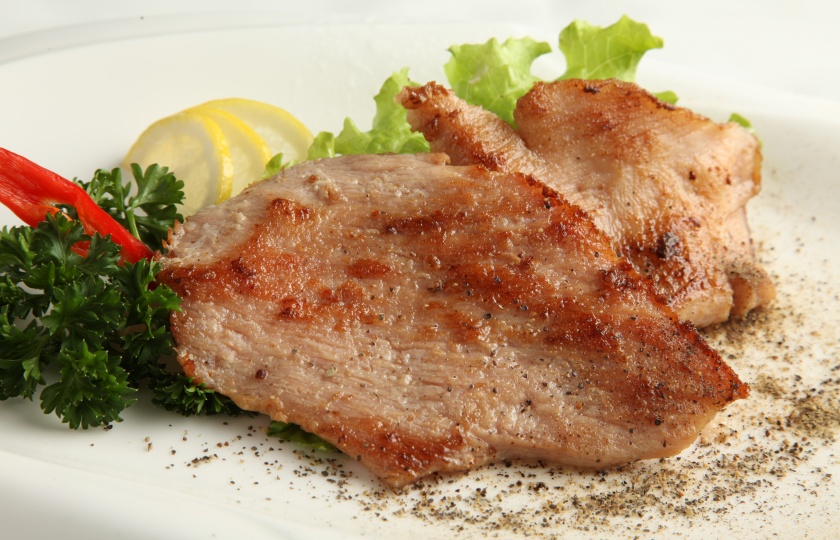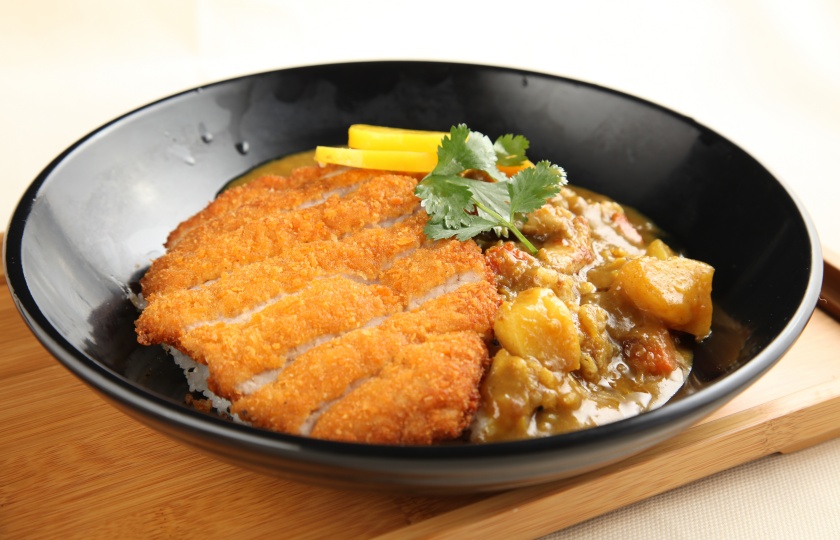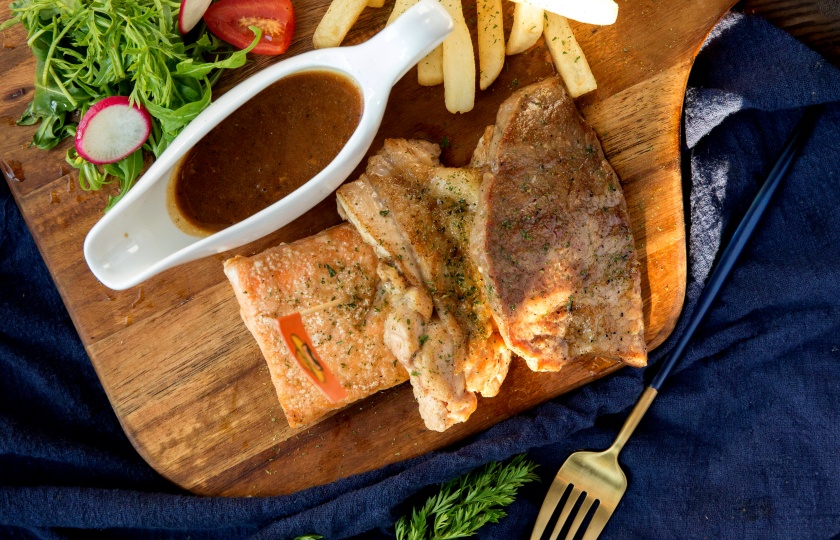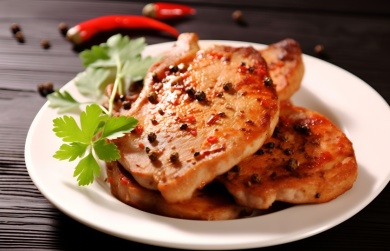How Long to Cook Thin Pork Chops: Quick Guide

Want to make perfect thin pork chops? Cooking time is key—overcooking will lose their original flavor. Here's the best method to cook them.
What is the best cooking time for thin pork chops?
When it comes to thin pork chops, the cooking time is quite short—around 3 to 4 minutes per side. You don’t need high heat; medium-high heat is perfect for achieving a golden, crispy crust while keeping the inside juicy. The key is to be gentle when flipping to avoid breaking the meat.
While cooking, you can use tongs to press down lightly on the pork chop. If the meat feels slightly springy and no longer soft, and the juices run clear, it's done. This ensures the pork chop is fully cooked while maintaining a crispy exterior and tender interior—an easy and delicious dish!
How do you know when thin pork chops are fully cooked?
There are a few simple methods to ensure that thin pork chops are cooked through:
Touch Test: Lightly press the pork chop with tongs. If it feels firm and springs back, it’s cooked. Raw meat tends to feel soft, while cooked pork chops will be more resilient and bounce back quickly when pressed.
Juice Observation: This method is quite straightforward. Cut into the pork chop and check the juices. If the juices are clear rather than pink or red, the pork chop is done. Additionally, when the meat is no longer translucent and the color is even, it indicates it’s fully cooked.
Temperature Test: If you have a kitchen thermometer, insert it into the thickest part of the pork chop to ensure it reaches at least 70°C (160°F). This is the most accurate method to guarantee the meat is fully cooked.
Color Check: Lastly, ensure the pork chop is golden brown on the outside, and the meat changes from red to white or light pink, without any raw or red areas left. This is a clear sign it’s done.

Do thin pork chops cook well in the slow cooker?
Thin pork chops cook very well in the slow cooker. The low and slow cooking method keeps the pork chops moist, preventing them from drying out, while making the meat incredibly tender. Since the temperature in the slow cooker is low, it gently cooks the pork chops all the way through, preserving their flavor and juiciness.
Simply place the pork chops in the slow cooker, add enough liquid (such as chicken broth, soy sauce, or some spices), and set it to cook on low for 4 to 6 hours. The pork chops will absorb the flavors, becoming tender enough to fall apart with a fork. The slow cooking process allows the pork to soak up all the seasonings, resulting in a flavorful bite!
However, because it’s slow cooking, the pork chops won’t have the crispy exterior that comes with pan-frying. But if you prefer tender, flavorful meat, the slow cooker is an ideal choice.
Is it better to fry thin pork chops in butter or oil?
The best option is to use both butter and oil together, combining the strengths of both. Butter adds a rich, creamy flavor and creates a golden, crispy crust on the pork chops, while oil has a higher smoke point, preventing the butter from burning too quickly.
By using both, you can achieve the perfect golden color and maintain a crispy exterior while keeping the inside tender. It’s a delicious combination that minimizes the risk of burning while enhancing the flavor. As long as you control the heat well, the results will be fantastic!

How do you keep thin pork chops from getting tough?
To keep thin pork chops tender, the key lies in controlling the cooking time and method. Here are some tips:
Don’t cook too long: Thin pork chops can dry out and become tough if cooked for too long. Typically, 3 to 4 minutes on each side is enough. Use medium-high heat to achieve a golden, crispy exterior while keeping the inside tender.
Use moderate heat: High heat can cause the outside to burn quickly while leaving the inside undercooked, which can make the pork chops tough. Adjust the heat accordingly to avoid this.
Use a combination of oil and butter: As mentioned earlier, using both oil and butter to fry helps achieve a golden, crispy crust while maintaining the pork chops' tenderness and flavor.
Avoid frequent flipping: Flip the pork chop only once during cooking. Repeated flipping can cause it to lose moisture, resulting in a tougher texture.
Tenderize before cooking: Marinating the pork chops in simple seasoning like salt, pepper, and olive oil beforehand can help lock in moisture and enhance flavor, keeping the meat tender.
Is it better to bake or pan fry pork chops?
If I had to choose, I'd lean toward pan-frying pork chops.
Pan-frying creates a crispy, golden exterior while keeping the inside juicy and tender, especially when you manage the heat well. The quick cooking process locks in the meat's natural juices, resulting in a rich, flavorful taste. Additionally, pan-frying offers more control—you can easily adjust the heat and make real-time changes. You can also elevate the flavor by adding butter, garlic, herbs, or other ingredients during cooking.
Of course, baking has its perks too, especially for those who enjoy a slow roast and the wonderful aroma that comes with it. However, if you're short on time and want to make delicious, tender pork chops quickly, pan-frying is my go-to method.























